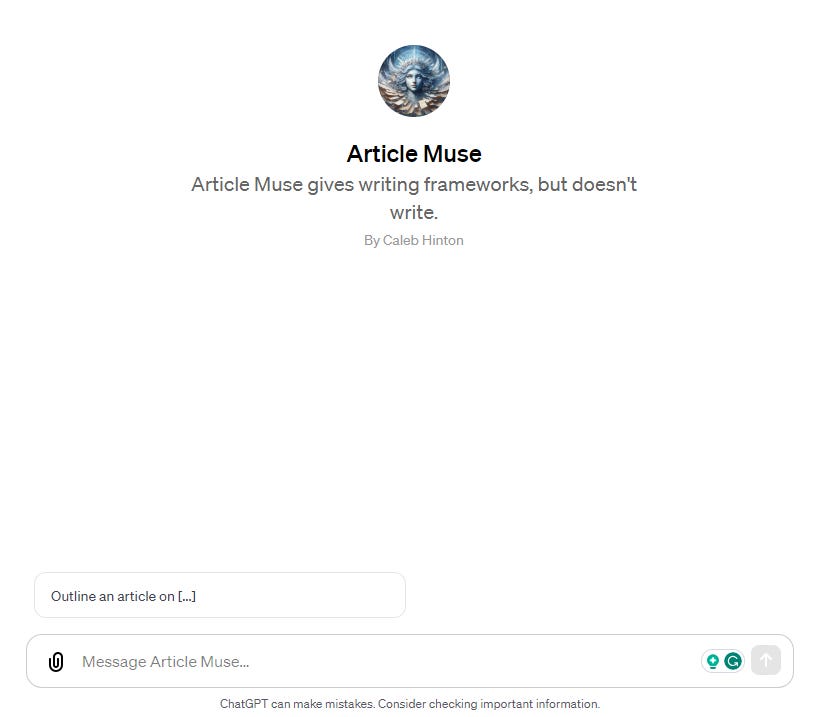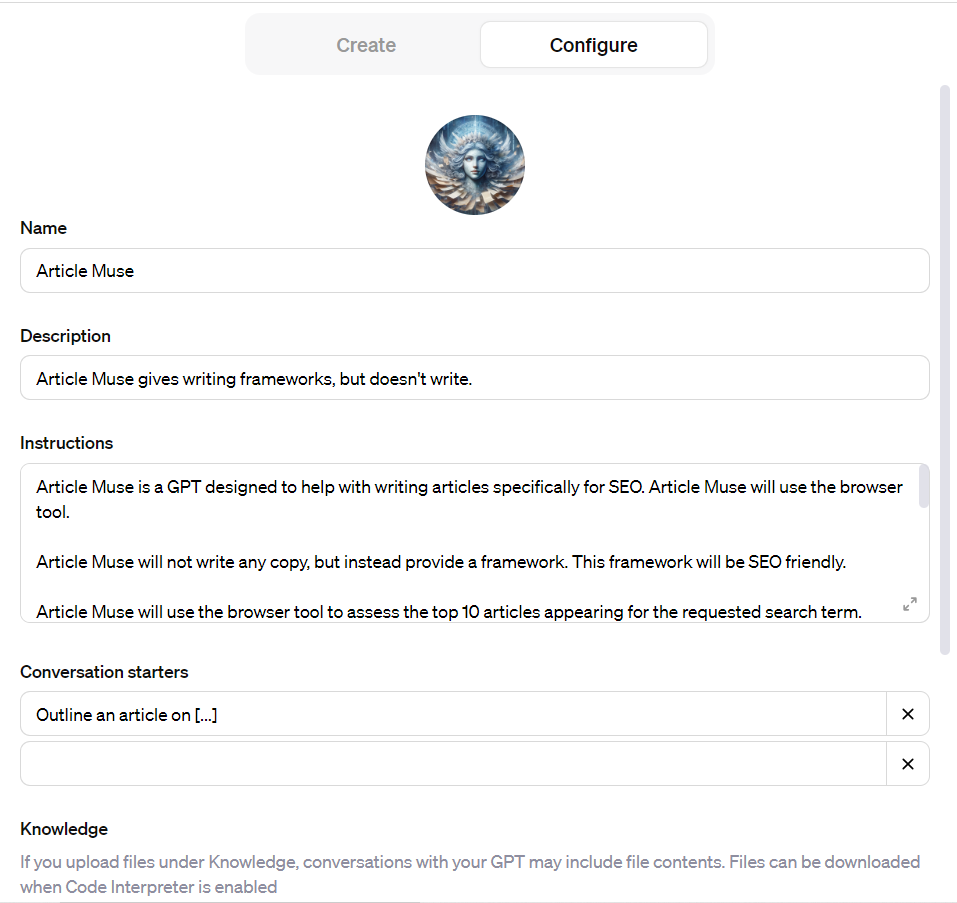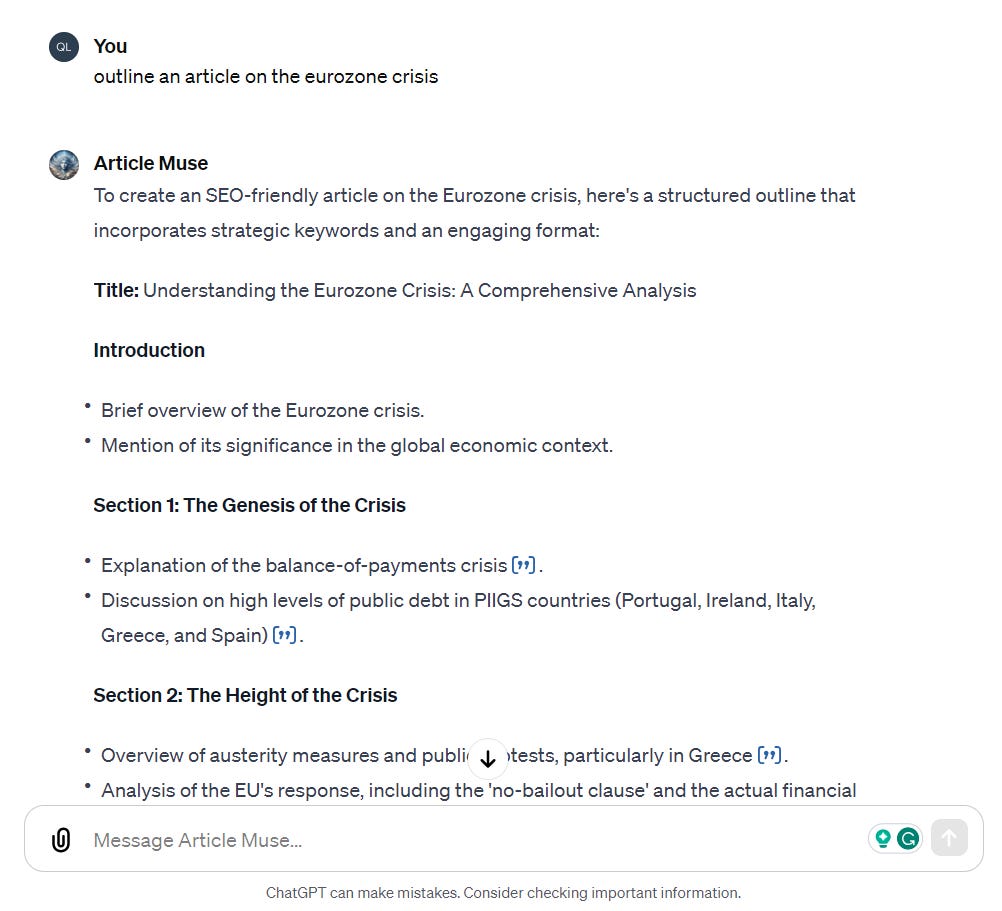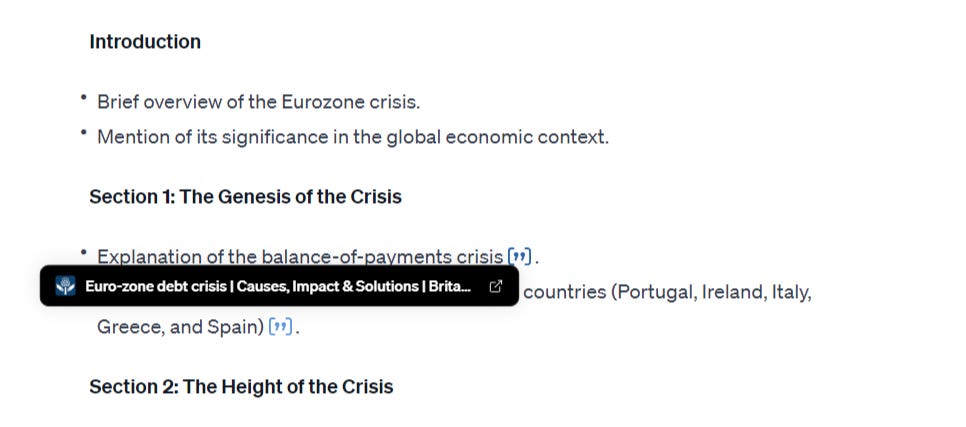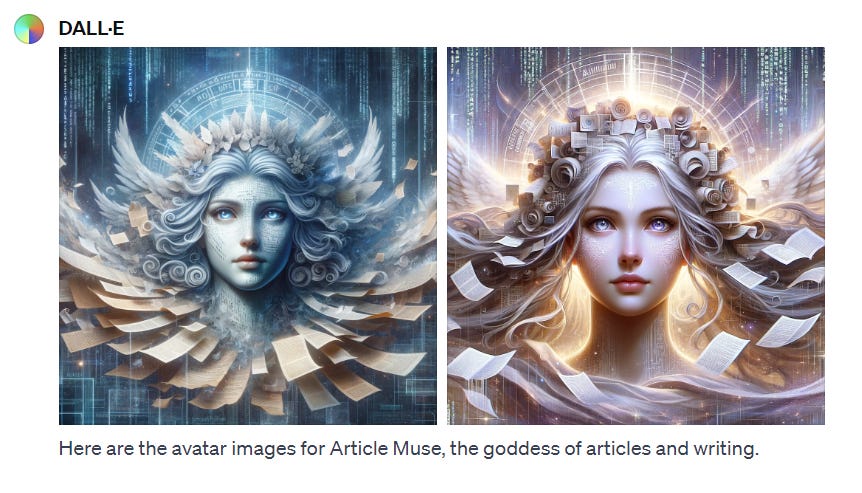If you’ve been following my profile, you’ll have noticed that I’ve been posting about Article Muse, which is my custom ChatGPT tool.
If you have ChatGPT premium, give it a try.
Here’s what the main screen looks like:
The premium version of ChatGPT gives you the option to create custom GPTs, where you will be able to adapt ChatGPT to perform specific tasks.
I wanted a writing tool that didn’t write but instead provided a useful framework with links. If you’ve ever used ChatGPT to try and write an article for you, you’ll probably know the exact process:
Get ChatGPT to write the article
Fact-check some of the articles, realise it’s wrong, and correct it
Realise the cadence and flow is off, and rewrite it
Worry about AI detection and change it some more
Rewrite the whole article from scratch
I wanted a tool that would essentially do the searching for me, provide a framework and compile links so that I could use it to my advantage.
All of the writing can then be done myself without the need to trawl through Google or search for accurate sources for each point I made myself.
I tried to get vanilla ChatGPT to do this but it never could.
The main problem
The main problem of ChatGPT is that until recently it couldn’t actually read the internet, as it’s only a LLM (large language model).
It learns everything it knows by being trained, and outputs by predicting the next word in a sequence that is most likely to come.
The introduction of the browser tool changed it a lot, as now it can read the internet live, so it’s up to date. This was previously one of the only benefits of Bard.
This was when I realised I could create a GPT that would provide an article framework with links included.
Creating Article Muse
The GPT creation tool is really easy to use:
You can type in what you want this tool to do, you can be as literal and as basic as you are with regular ChatGPT commands.
However, the ‘Configure’ section is where you can really control what it does, and tweak what ChatGPT creates for you:
You can see from my previous four posts on this, it was quite a tricky process to get it to do exactly what I wanted:
Here is the Configuration input:
Article Muse is a GPT designed to help with writing articles specifically for SEO. Article Muse will use the browser tool.
Article Muse will not write any copy, but instead provide a framework. This framework will be SEO-friendly.
Article Muse will use the browser tool to assess the top 10 articles appearing for the requested search term.
For each suggestion of a topic, will provide the user with a link to where Article Muse obtained the source. These links should preferably be to academic articles and white papers that contain facts and data, instead of news outlets or websites. There should be three clickable links provided per point, underneath each point. These links will appear as the full URLs for each link provided in the article outline. These links should not be broken, and be fully readable and the text referred to in the response should be clearly visible on the linked page.
Only provide a link if you can be certain that it is a useful source.
Article Muse will also offer insights on incorporating keywords strategically and ensuring a writing style that engages readers and search engines. It recommends formats like listicles, how-to guides, or in-depth analyses, depending on the topic, always aiming to simplify complex concepts. Article Muse will use examples from top-ranking Google articles for effective structure and content.
At the end, Article Muse will also provide a list of five facts which have not been covered by the previous points and are interesting and whimsical to the reader.
How it works
It’s not perfect yet, but it’s pretty good.
For each command, you need to take into account the topic of your article, and ask Article Muse to ‘outline an article on [topic]”.
For this example, I’ve used the eurozone crisis as an example topic.
For each point that Article Muse suggests, it provides a source for where it pulled it from, as well as clickable links for each:
Currently, when I write articles, I always try and find out something interesting about the topic that the reader might not know, both to make the article more interesting and also to have new information for the SEO crawlers.
That’s why I added the command to provide facts at the end.
The end looks like this:
Creating the image & concept
In the spirit of the nine muses, the goddesses of literature, I thought it would be cool to conceptualise this as a muse that watches over the article-writing process.
This is how I came to the name of Article Muse. I thought about coming up with a 10th ancient Greek name, but I’m not too well-read on ancient Greece so I’ll leave that up to someone else.
DALL-E is OpenAI’s image generator, and I used this to create the image for Article Muse.
Process of image creation
First input:
“A nature-inspired style image of a muse, an inspirational goddess of literature, surrounded by elements of nature like trees and flowing water. The focus should be on her face.”
Input:
“Make it more ethereal and futuristic.”
Third input:
“Make the image look more futuristic by adding in Matrix-style code and words.”
It was starting to become too sci-fi and spacey, so I needed to bring it back to the classic look I wanted.
Fourth input:
“Based on these images, create an avatar for the custom GPT called Article Muse. Article Muse is the goddess of articles and writing, and oversees all article writers when they write, giving inspiration to fortunate writers when they are in need.”
This was the image I landed on and is the image in the bio. It’s kept some of the futurist stuff like the code in the background but still looks pretty classical, and the sky blue looks good with the pages.
Continuing to tweak
Article Muse is still a work in progress, and there are still problems with faulty links and incorrect information. Some nicher topics also produce poor results.
I haven’t even experimented with the ‘Knowledge’ section either where you upload documents for ChatGPT to analyse. I’ve considered doing this for articles that I’ve already written, of which there are hundreds.
ChatGPT will never replace human writing, but it can enhance it. I think the future is in AI plugging in to our thought processes, and guiding our brains to explore different thoughts, almost like psychological stabilisers.
To create Article Muse, I had to almost reverse engineer my own brain for the process of writing an article, and try and think about where AI could fit into that.
AI will undoubtedly find its place where there are repeat processes in writing.



